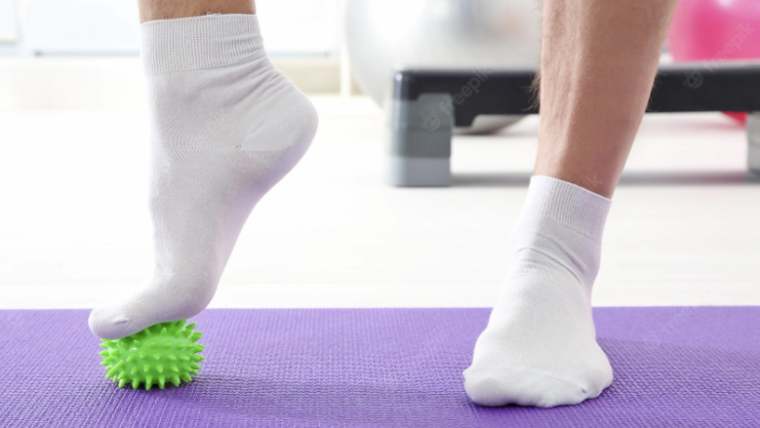Becoming skilled at running a 10k involves more than just knowing the distance. A solid training strategy makes all the difference. You need proper pacing and the right approach based on your course type. Base mileage development and appropriate gear selection play crucial roles too.
Many runners get confused about kilometers and miles during their training conversations. This mix-up happens frequently, and the 10k distance seems to cause the most confusion.
Here’s a simple fact: a 10k run is 6.2 miles. This basic conversion opens up numerous training possibilities. You can plan better and track your progress when you understand this distance in both metrics.
Are you ready to explore everything about conquering the 10k distance? Let’s break it down step by step.
Table of Contents
- 1 Distance Breakdown Analysis
- 2 Progressive Training Approach
- 3 Performance Level Benchmarks
- 4 Course-Specific Training
- 5 Race Performance Optimization
- 6 Here are some FAQs abour 10k to miles:
- 6.1 How many miles is a 10K exactly?
- 6.2 What is a really good 10K time?
- 6.3 What is a good 10km time for a woman?
- 6.4 Is 10km in an hour good?
- 6.5 Is a 50 minute 10K good?
- 6.6 How long to run 10k beginner?
- 6.7 How long should it take to walk 10k?
- 6.8 How many calories are burned in a 10km run?
- 6.9 How long should a 10k last?
- 6.10 Is a 10k walk good?
- 6.11 How many miles is a 10k for a beginner?
- 6.12 Is running 10k an achievement?
- 6.13 Can I walk a 10k race?
Distance Breakdown Analysis
You need to know the exact distance of a 10k to train effectively. A 10k equals 6.21 miles. The conversion becomes easy once you know the formula – multiply kilometers by 0.62137 to get miles.
Kilometer to Mile Conversion
Mental math during runs works better with 6.2 miles. This small rounding won’t substantially affect your training calculations. The simplified number helps you focus on your run rather than complex math.
Common Race Distances Compared
The 10k fits into the broader spectrum of popular race distances like this:
| Race Type | Kilometers | Miles |
|---|---|---|
| 5K | 5.0 | 3.1 |
| 10K | 10.0 | 6.2 |
| Half Marathon | 21.1 | 13.1 |
| Marathon | 42.2 | 26.2 |
Understanding Split Times
Smart pacing through split times helps you master your 10k performance. The best results come from breaking your 10k into three strategic sections:
- First 3k: Start slightly slower than your target pace (about 5 seconds per kilometer slower)
- Middle 4k (4-7k): Hit your target race pace
- Final 3k: Push harder if you’re feeling strong, especially in the last kilometer
Every world record from 1500 meters to the marathon has been set using negative splits – running the second half slightly faster than the first. Your 10k strategy should focus on a conservative first two miles. Find your rhythm in the middle section and prepare mentally for the challenge around the 4-mile mark.
Fatigue typically hits around the 4-mile (6.4km) mark, making even pacing harder. Your split time strategy becomes vital here. Success depends not just on a strong start but on finishing even stronger.
Progressive Training Approach
A methodical approach builds your fitness systematically for a successful 10k training. The principles stay consistent whether you convert your training from miles to kilometers or vice versa.
Building Base Mileage
A strong 10k performance starts with a solid foundation. Your base training should last 6-8 weeks and focus on consistent, easy-paced runs. Weekly mileage should increase by 10-15%. The same volume needs to be maintained for 1-2 weeks before any progression.
Weekly Mileage Progression Example:
| Week | Total Miles | Longest Run |
|---|---|---|
| 1 | 15 | 4 miles |
| 2 | 15 | 4 miles |
| 3 | 17 | 5 miles |
| 4 | 17 | 5 miles |
Speed Work Integration
Speed work can be incorporated after 6-8 weeks of consistent running that establishes your base. These beginner-friendly options will help you start:
- Strides (20-30 seconds) after easy runs
- Hill repeats (4-6 x 20 seconds)
- Fartlek training (3 x 2 minutes hard, 1 minute easy)
- Tempo runs (25-40 seconds slower than race pace)
Note that speed work should not exceed 20% of your weekly mileage. The 10k race preparation needs 1-2 quality sessions per week, with recovery days between them.
Recovery Optimization
Your body strengthens and adapts during recovery, not training. Proper recovery combines immediate post-run strategies with longer-term practices. Rehydration and protein intake should happen within 30 minutes after hard workouts, especially those beyond 4 miles.
Sleep plays a crucial role between training sessions – you need 8 hours minimum. Light jogging or cross-training can serve as active recovery methods. Hard workouts should be scheduled 48 hours apart to absorb training benefits completely.
The transition from base building to speed work requires keeping easy days truly easy. You should comfortably hold a conversation during these runs. This strategy will give a fresh start for quality sessions while building endurance for your target 10k distance.
Performance Level Benchmarks
Your 10k race needs realistic goals to track your progress. Let’s look at what you can expect at different levels as you tackle those 6.2 miles.
Beginner Target Times
Finishing the full 10k distance should be your main goal as a beginner. A sub-60 minute finish time makes an excellent target for your first race. You can expect to finish between 60-70 minutes if you’re just starting out. This means you’ll run about 10-11 minutes per mile. Your performance depends on several factors:
- Your current fitness level
- How consistent you train
- The course’s terrain
- Weather on race day
Intermediate Goals
After completing a few 10k races, you’ll likely target the 50-55 minute range. This pace translates to about 8-9 minutes per mile. Most intermediate runners log 15-25 miles weekly and have several races of different distances under their belt.
Performance Measures by Level:
| Level | Target Time | Pace per Mile |
|---|---|---|
| Beginner | 60-70 min | 10-11 min |
| Intermediate | 50-55 min | 8-9 min |
| Advanced | Under 45 min | 7-7:30 min |
Advanced Runner Standards
Advanced runners hit sub-45 minute 10k times consistently and elite runners push toward the 40-minute mark. You’ll need to maintain roughly 7 minutes per mile or faster at this level. Each age group has different standards, with runners typically reaching their peak between ages 25-35.
Elite male runners target sub-38 minutes, while elite female runners aim for sub-45 minutes. Note that you should adjust these measures based on your age, gender, and training background. Your personal best might differ from these standards – focus on beating your own times rather than comparing yourself to others.
You can set a realistic 10k goal time by multiplying your recent 5k time by 2.1. This accounts for the natural slowdown over longer distances while keeping your goals achievable.
Course-Specific Training
Your 10k training success depends on how well you adapt to different terrains and environments. A well-rounded runner knows how to handle various surfaces and understands what each training type adds to their performance.
Urban Route Training
Running in the city brings its own set of challenges and opportunities to your 10k preparation. Planning your routes beforehand helps you get the most from your training while staying safe. Running apps like MapMyRun or Strava can help you find popular routes that match your distance goals.
Tips for urban training:
- Choose routes with minimal traffic interruptions
- Mix different surfaces (concrete, asphalt, grass strips)
- Plan around peak traffic hours
- Make use of urban parks for tempo runs
- Practice navigation skills for race day
Trail Running Adaptation
Trail running adds a valuable dimension to your 10k training, particularly if you’re preparing for varied course conditions. Studies show that running on trails helps your balance, builds stabilizer muscles, and improves your running economy. Your focus should be on consistent effort rather than pace on trails, as changing terrain naturally affects your speed.
Start your trail training gradually. Begin with easier paths before you move to technical terrain. Here’s what a typical trail progression looks like:
| Week | Trail Type | Duration |
|---|---|---|
| 1-2 | Flat, wide trails | 30 min |
| 3-4 | Rolling hills | 45 min |
| 5-6 | Technical single-track | 60 min |
Track Work Benefits
Track training is a great way to prepare for a 10k. Prominent runners like Eliud Kipchoge include regular track sessions in their training, and research backs this approach. A 2018 study showed that runners who did track training had improved VO2 max, better sprint times, and better running economy.
Key Track Benefits:
- Precise distance measurement for interval training
- Consistent surface for speed development
- Less joint impact than concrete
- Accurate pace monitoring
- Better running form through repetition
You’ll see the best results by including one track session each week. Start with simple workouts like 400m repeats and work your way up to more complex sessions. The controlled environment lets you focus on pace and form, which helps improve your road and trail running.
Each training environment plays a specific role in your 10k preparation. Urban routes build mental toughness and help with pace management. Trails develop strength and adaptability. Track work improves your speed and form. Combining these three elements in your training plan prepares you for any 10k course challenge.
Race Performance Optimization
A successful 10k race depends on three vital elements: nutrition, gear, and pacing. These aspects need optimization to achieve your best time for those 6.2 miles.
Nutrition Strategy
Your nutrition plan starts before race day. Here’s a pre-race fueling timeline to help you perform at your peak:
| Timing | Nutrition Action |
|---|---|
| 2-3 hours before | High-carb meal (200-300 calories) |
| 1 hour before | Light snack (banana or energy bar) |
| 20-30 minutes before | Optional energy gel or chews |
Hydration plays a vital role – drink at least 500ml of fluid between waking and race start. Runners who race longer than 60 minutes should take an energy gel around the 25-30 minute mark. Your urine should be straw-colored before the race starts, which suggests proper hydration.
Gear Selection
The right equipment makes a big difference in your race day performance. A GPS watch becomes your most valuable tech tool that tracks pace and distance while monitoring heart rate zones. These essentials ensure comfort and peak performance:
- Technical Fabric Clothing: Pick moisture-wicking materials that suit weather conditions
- Properly Fitted Shoes: Break them in during training at least a dozen times
- Moisture-Wicking Socks: Get running-specific socks to prevent blisters
- Race Belt: Display your number comfortably without pins
Pacing Technology
GPS watches have changed how runners approach their 10k race. Modern devices offer advanced features that help maintain steady pacing throughout your 6.2 miles. Latest devices can:
- Display real-time pace adjustments
- Track heart rate zones
- Monitor cumulative weekly mileage
- Share workout data with coaches
GPS tracking typically adds 0.2-0.3 extra miles to your course distance. Manual lap tracking at course markers provides more accurate pacing. Power meters help measure consistent effort, especially on hilly or windy courses.
Your watch should display three key metrics: current pace, average pace, and elapsed time. These numbers help maintain your target pace throughout the 10k distance. Charge your device the night before and check your preferred distance units (miles or kilometers) before the race begins.
Pro Tip: Test your race-day pacing strategy during training runs. Set watch alerts for running too fast in the first mile – this prevents early burnout before reaching the finish line.
A successful 10k race demands skills in several areas. You need to know the exact distance of 6.2 miles and train effectively on different types of terrain. Your performance depends on a well-laid-out training program, realistic standards, and smart race-day planning with proper nutrition and gear.
The right pacing approach and regular training on city streets, trails, and tracks will get you ready for any 10k challenge. Your performance targets should line up with your current fitness level. Beginners might shoot for a 70-minute finish time, while advanced runners can work toward breaking the 45-minute barrier.
Your 10k experience comes down to how well you prepare and execute. Build your base mileage first, then add structured speed work and perfect your race strategy. Each run takes you closer to your goals. Every finish line you cross becomes a milestone in your running experience.
Here are some FAQs abour 10k to miles:
How many miles is a 10K exactly?
A 10K is exactly 6.21 miles. This distance is commonly used in races and fitness challenges. To convert 10K to miles, multiply kilometers by 0.62137.
What is a really good 10K time?
A really good 10K time for a seasoned runner is under 40 minutes. Competitive runners often achieve even faster times, depending on training and conditions. Completing a 10k run to miles in such a time is a mark of great endurance and speed.
What is a good 10km time for a woman?
A good 10km time for a woman ranges between 50 and 60 minutes for recreational runners. For competitive athletes, finishing closer to 40 minutes is exceptional. Completing 10k meters to miles in this time showcases strong fitness.
Is 10km in an hour good?
Yes, completing 10km in an hour is considered a solid performance for most runners. It equates to running 6.21 miles at a steady pace. This is a great target for those training for their first race.
Is a 50 minute 10K good?
A 50-minute 10K is a very good time for recreational runners. This pace translates to about 8 minutes per mile. It reflects consistent training and a strong effort over 6.21 miles.
How long to run 10k beginner?
For beginners, running 10K may take between 60 and 80 minutes. This depends on fitness levels and running experience. Completing a 10k run to miles at a steady pace is a great goal for novices.
How long should it take to walk 10k?
Walking 10K typically takes 90 to 120 minutes at a moderate pace. This translates to a distance of 6.21 miles, making it an achievable challenge for regular walkers.
How many calories are burned in a 10km run?
A 10km run burns roughly 600–800 calories, depending on body weight, pace, and effort. Running 10k to miles efficiently is an excellent way to stay active and burn energy.
How long should a 10k last?
A 10K can last anywhere from 30 minutes for elite runners to over 90 minutes for casual participants. Most people aim for a pace that allows them to complete 10k meters to miles comfortably.
Is a 10k walk good?
Yes, a 10K walk is excellent for cardiovascular health and endurance. Walking 10K, or 6.21 miles, is a great low-impact exercise that benefits overall well-being.
How many miles is a 10k for a beginner?
For beginners, a 10K is always 6.21 miles. Starting with shorter runs or walks and building up gradually is key to achieving this milestone comfortably.
Is running 10k an achievement?
Absolutely, running a 10K is a significant achievement for anyone. Covering 6.21 miles requires dedication, endurance, and consistent effort.
Can I walk a 10k race?
Yes, you can walk a 10K race, and many events welcome walkers. Covering the 6.21 miles at your own pace is a great way to participate and enjoy the experience.




